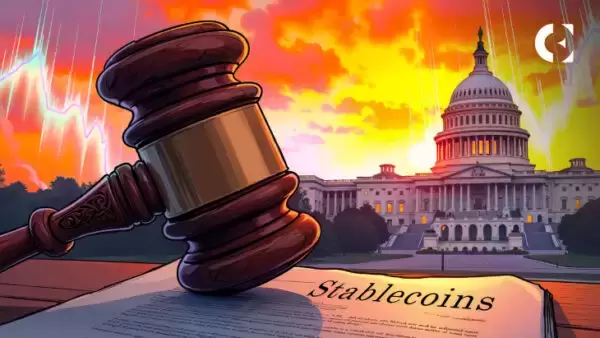 |
|
 |
|
 |
|
 |
|
 |
|
 |
|
 |
|
 |
|
 |
|
 |
|
 |
|
 |
|
 |
|
 |
|
 |
|

Tokenomics is the economic structure of a cryptocurrency that includes factors affecting the token’s use and value now and in the future. These include creation, distribution, supply and demand, incentive mechanisms and burn schedules. Knowledge of tokenomics is essential for an investor joining a crypto project.
What Is Tokenomics?
The word “tokenomics” combines “token” and “economics.” It refers to a set of rules that, when combined, create a crypto ecosystem. These rules are encoded in software and are therefore predictable and transparent, controlling how the tokens are created, distributed and used on the network.
For example, there is a fixed supply of 21 million Bitcoin ($BTC) coins that are generated through mining. Some individuals are rewarded with the ability to validate transactions, a subsidy that halves every 210,000 blocks (roughly every 4 years) until all 21 million Bitcoins are mined.
Key Elements of Tokenomics
Several important elements of tokenomics affect a token value and its utility. Here are the key aspects of tokenomics:
1. Token Supply
When it comes to price, the supply of token is very important. Maximum supply pertains to a total of all the tokens that will exist ever. For example, take Bitcoin which has a maximum supply of 21 million coins. There is a cap of 84 million coins for Litecoin ($LTC). Circulating supply is also another important factor. This means that how many tokens are currently in circulation. The price of the token is based on the balance between maximum and circulating supply rather than its overall supply.
2. Token Utility
The token utility is its utility within the ecosystem of the token. One example comes from Binance Coin ($BNB) that is used to pay transaction fees. It is also important for users to be able to use some of Binance exchange services. Holders have the ability to vote on decisions. Security tokens are what represents ownership of assets. The more utility a token has, the stronger the tokenomics.
3. Token Distribution
The value of a token can depend on how it is distributed. There are two main distribution methods: fair launch and pre-mining. A fair launch is when a token is spread out evenly to the public. Fair launches include Bitcoin and Dogecoin. Pre mining, on the other hands, it means distribution of tokens to certain investors, before the tokens are released to public. Ethereum and Binance Coin have used pre mining.
The stability of their tokens depends on how fairly tokens are distributed. You might see the price of the token be volatile if it is controlled by a select few holders. Usually, it is more stable when the distribution is more equal.
4. Token Burns
Token burns refer to the act of permanently taking tokens out of circulation. This step reduces the total supply token. For example, more often, Binance Coin (BNB) burns tokens thus reducing its supply. Ethereum started burning tokens in 2021 as well. Reducing its total supply can increase its value of the token. However, if token burns are not managed properly it can damage liquidity of token.
5. Incentive Mechanisms
People participate in the network due to incentive mechanisms. For instance, Bitcoin miners are rewarded for validating transactions. In Proof of Stake (PoS) systems, users lock up tokens in order to transact. As a result of this activity, they earn rewards.
Incentives are used by DeFi projects like Compound to encourage participation. Tokens are rewards for users. They align the participants’ interests with the platform’s success.
The Future of Tokenomics
Tokenomics is an evolutionary process. Many tokenomics models have been tested since Bitcoin was created in 2009. It is true, and some have succeeded, some have failed. Bitcoin’s model has been resilient enough. While the market grows, new concepts such as Non-Fungible Tokens (NFTs) come to existence.
The value of NFTs is created by scarcity. Real world assets (RWAs), such as real estate, could be tokenized and thus create new tokenomics models. These developments would give additional opportunities of the foreign investors.
Conclusion
Finally, understanding cryptocurrency requires knowing about tokenomics, which includes the token’s supply, utility, distribution, burns, and incentives — all of which affect the value and performance a given token may have. Tokenomics analysis helps investors with decision making. Ultimately, cryptocurrency is growing, and understanding tokenomics will always be relevant for crypto investors.
免責聲明:info@kdj.com
所提供的資訊並非交易建議。 kDJ.com對任何基於本文提供的資訊進行的投資不承擔任何責任。加密貨幣波動性較大,建議您充分研究後謹慎投資!
如果您認為本網站使用的內容侵犯了您的版權,請立即聯絡我們(info@kdj.com),我們將及時刪除。
-

-

- 隨著鯨魚的積累,比特幣(BTC)所有權動態變化,較小的持有人卸載
- 2025-04-03 10:20:12
- 來自加密分析公司玻璃節的數據揭示了比特幣(BTC)所有權動態的重大變化。
-

-

- 中國在其東北發現大量的1,000噸金押金
- 2025-04-03 10:15:21
- 地質學家宣佈在中國東北地區發現了大量1,000噸金礦床。
-

-

-

-

- 以太坊(ETH)再次處於眾人矚目的焦點,因為技術指標表明了可能的周轉方式。
- 2025-04-03 10:05:13
- ETH目前為1900美元,分析師表明,如果資產可以收回最重要的阻力水平,則可能會出現牛市。
-






























































